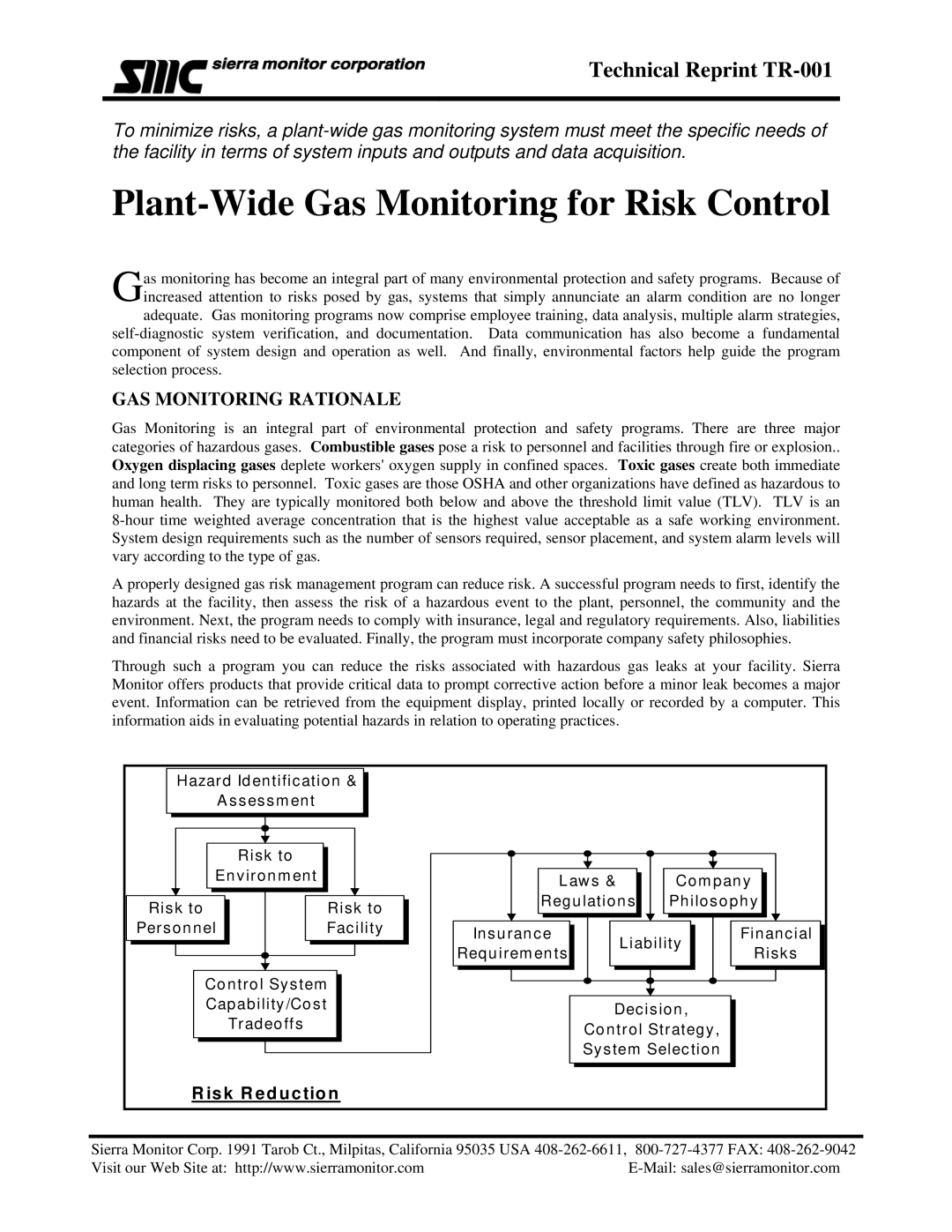TR-001 specifications
Sierra Monitor Corporation's TR-001 is a cutting-edge solution designed to enhance gas detection and monitoring systems, particularly in industrial environments. This advanced device serves as a critical component for ensuring safety and compliance in facilities where hazardous gases may be present.One of the main features of the TR-001 is its ability to detect a wide range of gases, including toxic, flammable, and asphyxiant gases. This versatility makes it appealing to various industries, from oil and gas to chemical manufacturing. Its robust sensor technology offers high sensitivity and rapid response times, ensuring that potential hazards are identified swiftly, thus minimizing risk to human health and safety.
The TR-001 is equipped with advanced digital signal processing (DSP) capabilities. This technology enhances the accuracy of measurements and the reliability of the data collected. It also features built-in self-diagnostics, which regularly check the functionality of the sensors, ensuring that they remain in optimal condition and that any issues are flagged immediately. This proactive approach is vital for maintaining effective safety protocols and compliance with industry regulations.
Connectivity is another key characteristic of the TR-001. It supports various communication protocols, including Modbus, which allows for easy integration into existing industrial control systems. This feature not only facilitates real-time monitoring but also enables remote access to data, simplifying the management of safety systems across large facilities.
Furthermore, the TR-001 is designed with user-friendliness in mind. Its intuitive interface allows for straightforward configuration and operation, minimizing the training time required for personnel. The device’s compact form factor also ensures easy installation, making it a practical choice for various applications.
Durability is another hallmark of the TR-001; it is constructed to withstand harsh environmental conditions, contributing to its longevity and reliability in demanding industrial settings. With its combination of innovative technology, ease of integration, and robust design, Sierra Monitor Corporation's TR-001 sets a new standard in gas detection solutions, enhancing safety and operational efficiency across industries.

